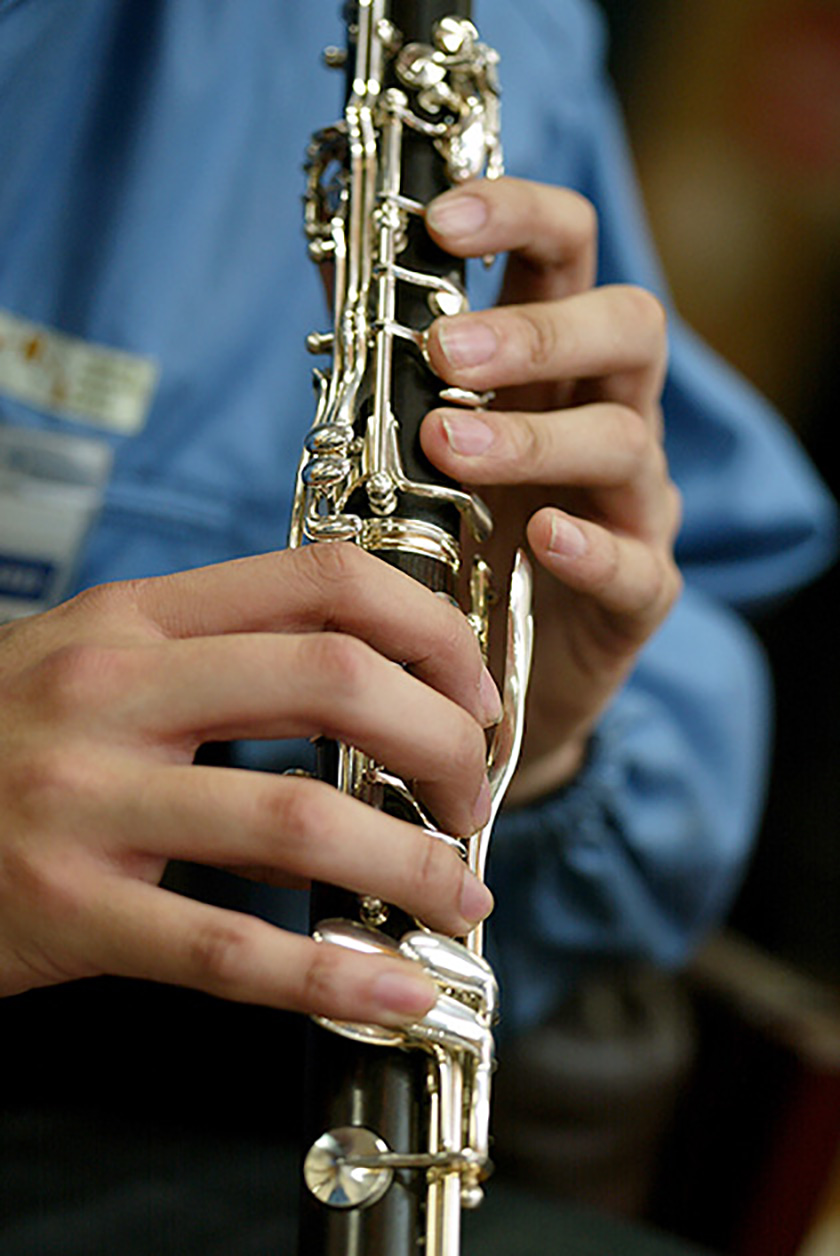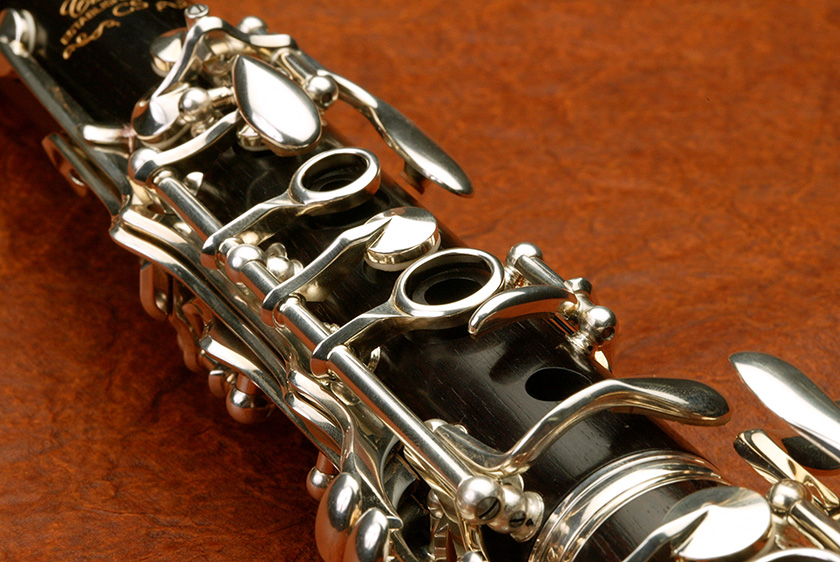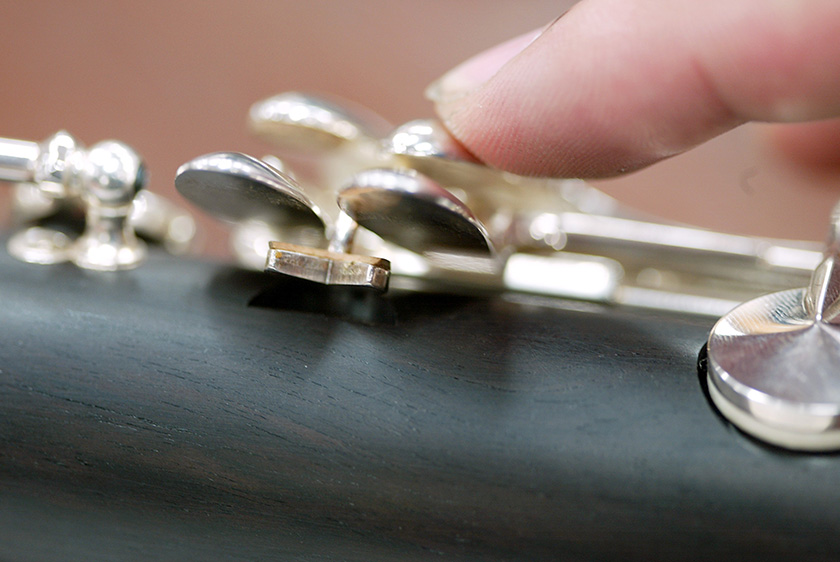The Structure of the Clarinet
A single barrel for many keys
Is the fingering similar to the fingering for a recorder?
The many silver-colored parts are keys for covering the tone holes in the tube. There are numerous keys.
The player holds the instrument with his left hand uppermost and right hand underneath, just like a recorder, and closes the holes by pressing down on the circular rings with his index finger, middle finger, and ring finger. There is no ring for the ring finger of the left hand-just a hole.

Fingering similar to that for the recorder
Enabling the rings to work together
The rings are made to work together on the clarinet. For example, there is a circular cap between the index finger and middle finger of the left hand. This is connected to the neighboring rings, so that when a neighboring ring is pressed, the cap will cover its hole at the same time. The cap is connected to the neighboring rings.

The ring sections work together
There is also an intricate mechanism in the place where there are what appear to be four spoons-which is the part of the instrument where the little finger of the right hand goes. Can you see the metal fittings that hook on to these spoons? These fittings are connected to the upper keys, so that pressing the lower keys activates the upper keys as well.

Mechanism for the little finger which enables the upper key to move as well when the lower key is pressed.
Musical Instrument Guide:Clarinet Contents
Structure
How the Instrument is Made
Choosing an Instrument
Trivia
- "I Broke My Clarinet" is a French folk song
- Inspiring composers
- In Italy, a single B♭ clarinet
- At one time, most clarinets were made of boxwood
- In vogue in the 1900s-the metal clarinet
- A transparent clarinet?
- Famous clarinet works: concertos
- Famous clarinet works: chamber music
- What is the relationship between hertz and cents?
